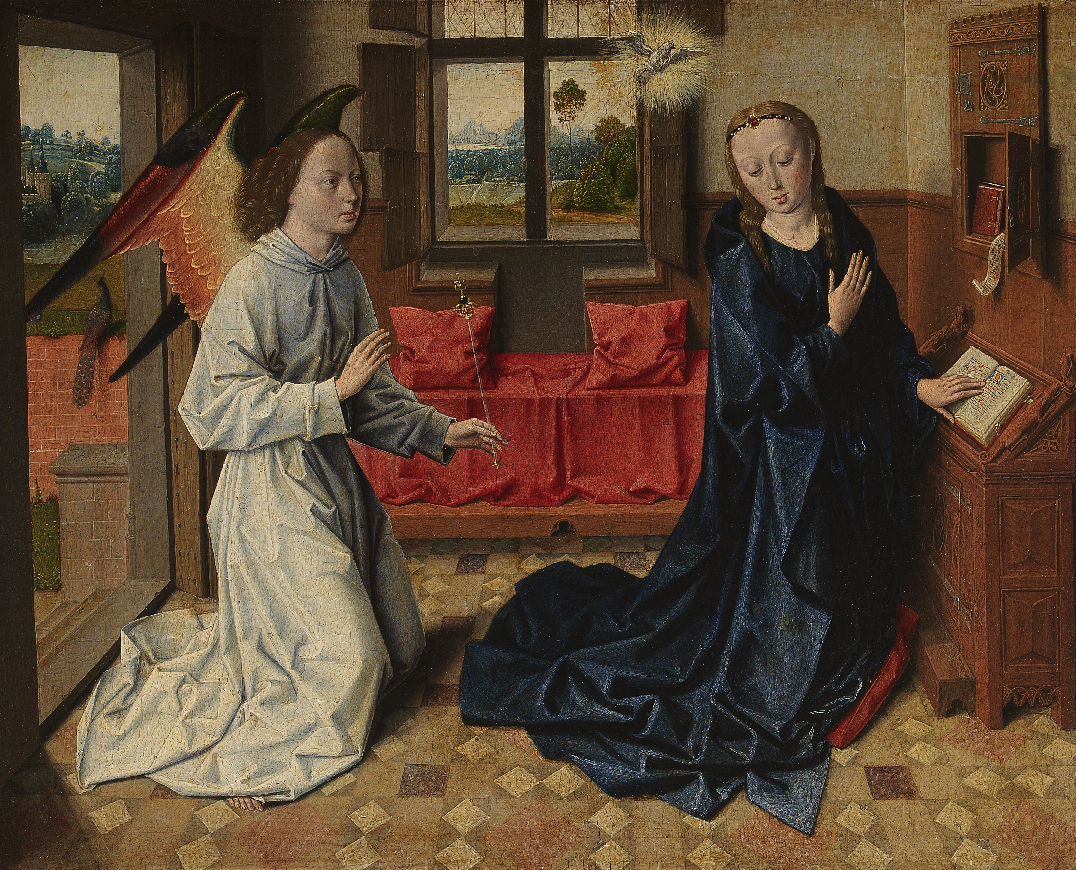
- Flanders, c. 1480–90
- Tempera and oil (?) on panel, transferred to canvas
- Inv. 628
Annunciation
The painting, which was transferred to canvas in 1889, has been attributed to various artists in the past, including Rogier van der Weyden, Hugo van der Goes and the Master of the Munich Betrayal. It is now believed to have been created by a painter who was close to the circle of Dierick Bouts.
The spatial layout of the work, arranged in accordance with a trapezoidal structure, allows a close relationship to be established between all of the elements of the composition. The meaning of the painting can therefore be said to be revealed in the interpretation of the relations that emerge from its symbolic content. The visible world refers the observer to the domain of spirituality – the light that announces the Saviour, the dove that indicates the presence of the Holy Spirit, the ‘cross’ that heralds the Passion – corresponding to a concern that is the essential aim of all religious painting.
Although the landscape is replete with realist details in the Flemish manner, it too follows an aesthetic that is rooted in the sphere of the sacred: the numerous vanishing lines converge on the tree of life, while the peacock, the symbol of eternal life, is positioned on the garden wall, an allusion to Paradise.
Sold by the King of the Netherlands to Nicholas I of Russia, 1850; Hermitage Museum, St Petersburg. Acquired by Calouste Gulbenkian through Antikvariat, Moscow, April 1929.
H. 27.3 cm; W. 34.4 cm
Leuven 1998
Maurits Smeyers, Dirk Bouts (ca. 1410-1475), een Vlaams primitief te Leuven, exhibition catalogue. Leuven: Peeters, 1998, p. 382–3, no. 74.
Périer-d’Ieteren 2005
Catheline Périer-d’Ieteren, Thierry Bouts. L’oeuvre complete. Brussels: Fonds Mercator, 2005, p. 361, B2.
Sampaio 2009
Luísa Sampaio, Painting in the Calouste Gulbenkian Museum. Lisbon/Milan: Calouste Gulbenkian Museum/Skira, 2009, pp. 22–3, cat. 3.
Lisbon 2011
Calouste Gulbenkian Museum. Lisbon: Calouste Gulbenkian Museum, 2011, p. 100, cat. 75.